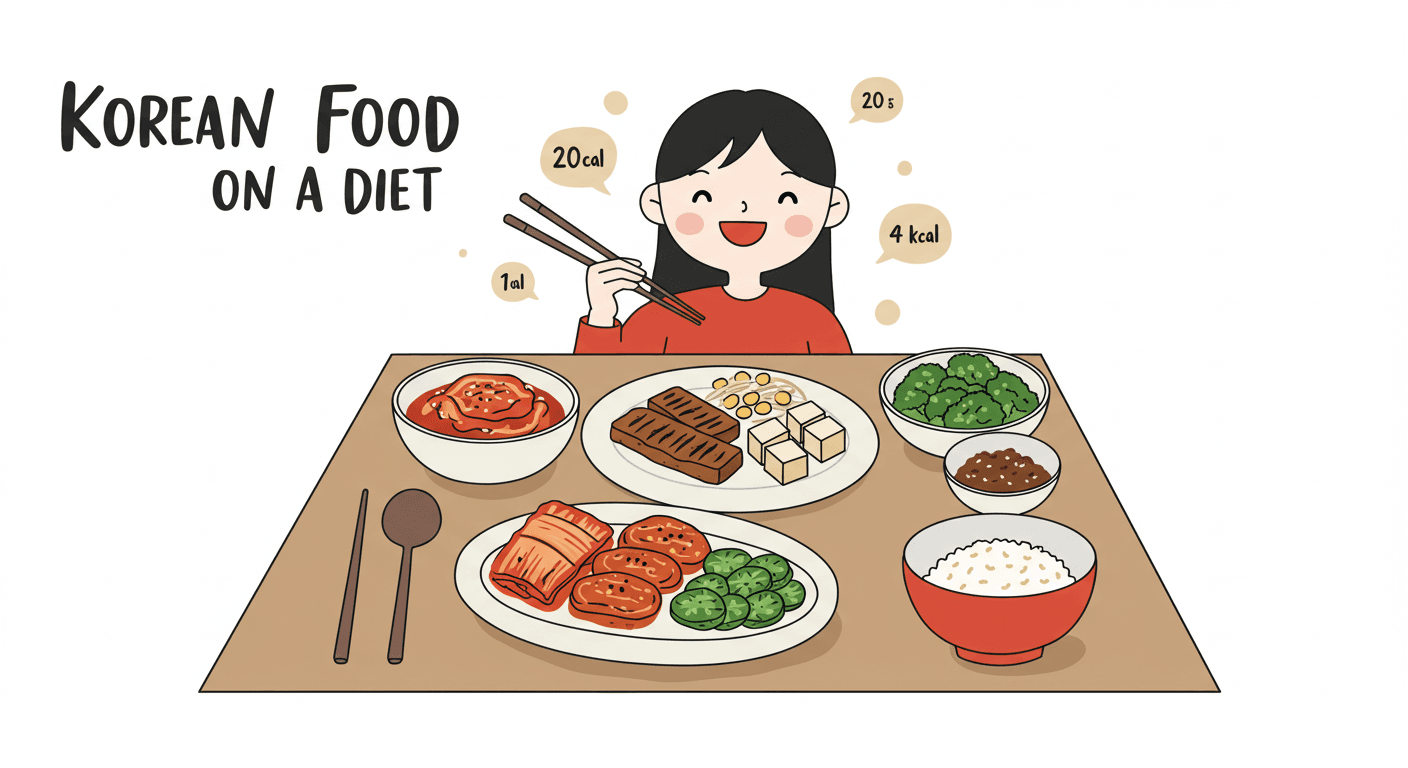How to Enjoy Korean Food on a Diet: Delicious and Healthy Tips
Published: March 15, 2024

Korean cuisine is famous for its bold flavors, vibrant colors, and diverse dishes like kimchi, bibimbap, and bulgogi. But if you're on a diet, you might wonder: Can I still enjoy Korean food without ruining my goals? The good news is yes! With a few smart tweaks, you can savor the taste of Korea while staying on track with your health journey. In this guide, we'll share practical tips to enjoy Korean food on a diet, balancing flavor and nutrition effortlessly.
Why Korean Food Can Be Diet-Friendly
Korean cuisine is naturally packed with ingredients that align with a healthy lifestyle. Think fermented foods like kimchi (great for gut health), lean proteins like tofu and fish, and plenty of vegetables. The key is knowing how to adjust portions and preparation methods to fit your dietary needs—whether you're aiming for weight loss, low-carb, or balanced eating.
1. Start with Low-Calorie Korean Staples
Korean meals often come with a variety of side dishes (banchan), many of which are low in calories and high in nutrients. Here's how to make the most of them:
Kimchi
This spicy fermented cabbage is low in calories (about 20-30 calories per serving) and rich in probiotics. Opt for kimchi without added sugar for the healthiest choice.
Steamed Vegetables
Look for lightly seasoned options like spinach (sigeumchi namul) or bean sprouts (kongnamul). They're filling, fiber-rich, and diet-approved.
Seaweed Soup (Miyeokguk)
A light, flavorful broth with minimal calories—perfect for a satisfying starter.
Pro Tip: Skip the heavy rice portion and pair your banchan with a small amount of brown rice or cauliflower rice for a low-carb twist.
2. Choose Lean Proteins Over Fried Options
Korean BBQ is a fan favorite, but it's easy to overindulge in fatty cuts or deep-fried dishes. Instead, focus on these diet-friendly proteins:
Grilled Chicken (Dak Galbi)
Marinated in spicy sauce but grilled, not fried—lower in fat and full of flavor.
Tofu (Dubu)
Soft or grilled tofu is a staple in dishes like sundubu jjigae (tofu stew). It's high in protein and low in calories.
Fish
Steamed or grilled fish like mackerel (godeungeo) offers omega-3s without the extra grease.
Avoid tempura-style dishes or anything coated in sugary sauces to keep your meal light.
3. Master Portion Control with Korean Classics
Dishes like bibimbap and kimbap are delicious but can sneaky calories if you're not careful. Here's how to enjoy them on a diet:
Bibimbap
Request a smaller rice portion or skip it entirely, loading up on veggies like mushrooms, zucchini, and carrots. Go easy on the sesame oil and ask for the fried egg to be swapped for a boiled one.
Kimbap
Opt for versions with tuna or veggies instead of fried fillings. One roll can be a balanced snack if you avoid overeating.
Keyword Tip: Searching for "healthy Korean recipes" or "low-calorie bibimbap" online can give you more ideas to customize these classics.
4. Watch Out for Hidden Calories
Korean food is often healthy at its core, but sauces and cooking methods can add up. Keep an eye on:
Gochujang
This red pepper paste is tasty but often mixed with sugar or syrup. Use it sparingly or look for low-sugar versions.
Soy Sauce
High in sodium, so dilute it with water or use less to avoid bloating.
Fried Sides
Skip the Korean fried chicken (yangnyeom chicken) and pancakes (jeon) if you're cutting calories.
5. Balance Your Meal Korean-Style
Traditional Korean meals are served with a variety of small dishes, making it easy to create a balanced plate. Aim for:
- 50% vegetables (non-starchy ones like cabbage, radish, or greens)
- 25% lean protein (tofu, fish, or chicken)
- 25% carbs (a small scoop of rice or sweet potato)
This ratio keeps you full without overloading on calories, all while enjoying the Korean dining experience.
Bonus: Healthy Korean Food Recipe to Try
Want to bring Korean flavors home? Try this simple Spicy Tofu Stir-Fry:
재료:
- 1 block firm tofu
- 1 tbsp gochujang (low-sugar)
- 1 tsp soy sauce
- 1 cup zucchini
- 1/2 cup mushrooms
- sesame seeds (optional)
조리 방법:
Cube tofu, stir-fry with veggies in a non-stick pan, mix in sauce, and cook until tender. Sprinkle sesame seeds for crunch.
Calories: ~200 per serving.
Final Thoughts: Enjoy Korean Food Guilt-Free
You don't have to give up Korean cuisine to stay on a diet. By choosing nutrient-dense ingredients, controlling portions, and tweaking recipes, you can enjoy the spicy, savory goodness of Korean food while hitting your health goals. Next time you're craving kimchi or bulgogi, use these tips to keep it light and delicious!
Have a favorite Korean dish you'd like to make healthier? Share your thoughts below, or search "diet-friendly Korean food" for more inspiration!
Use our Recipe Calorie Calculator to analyze Korean dishes and plan your healthy diet.